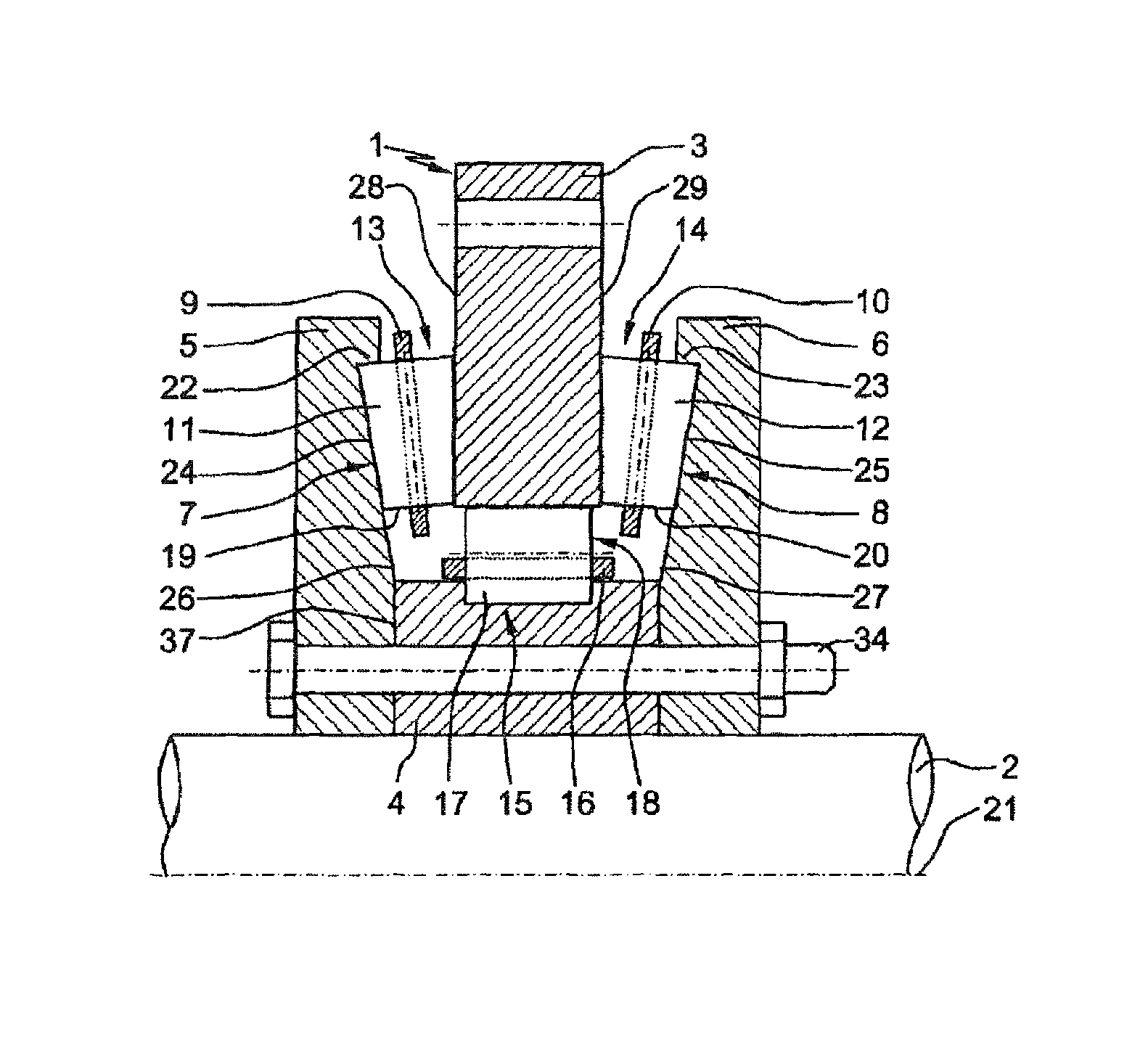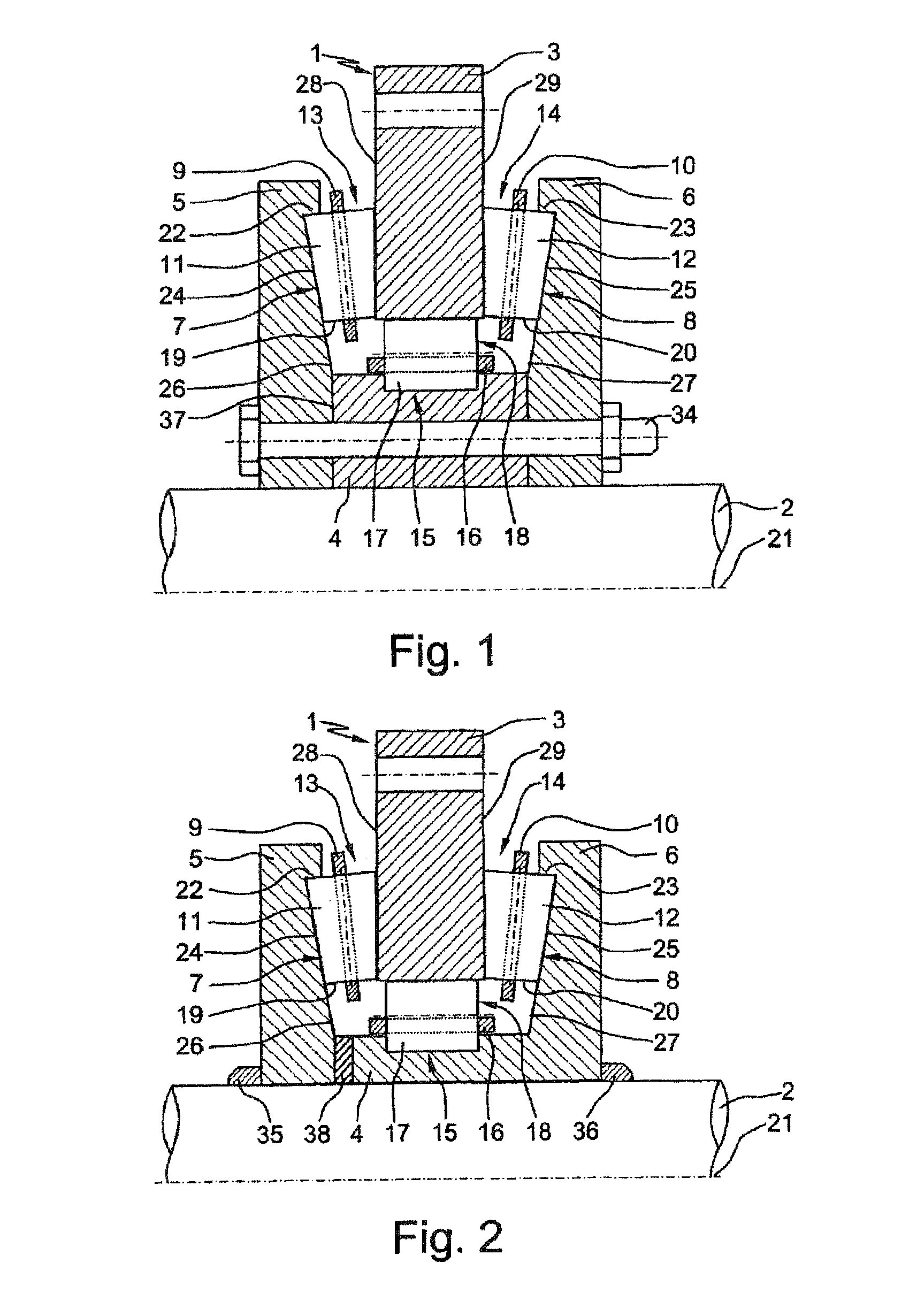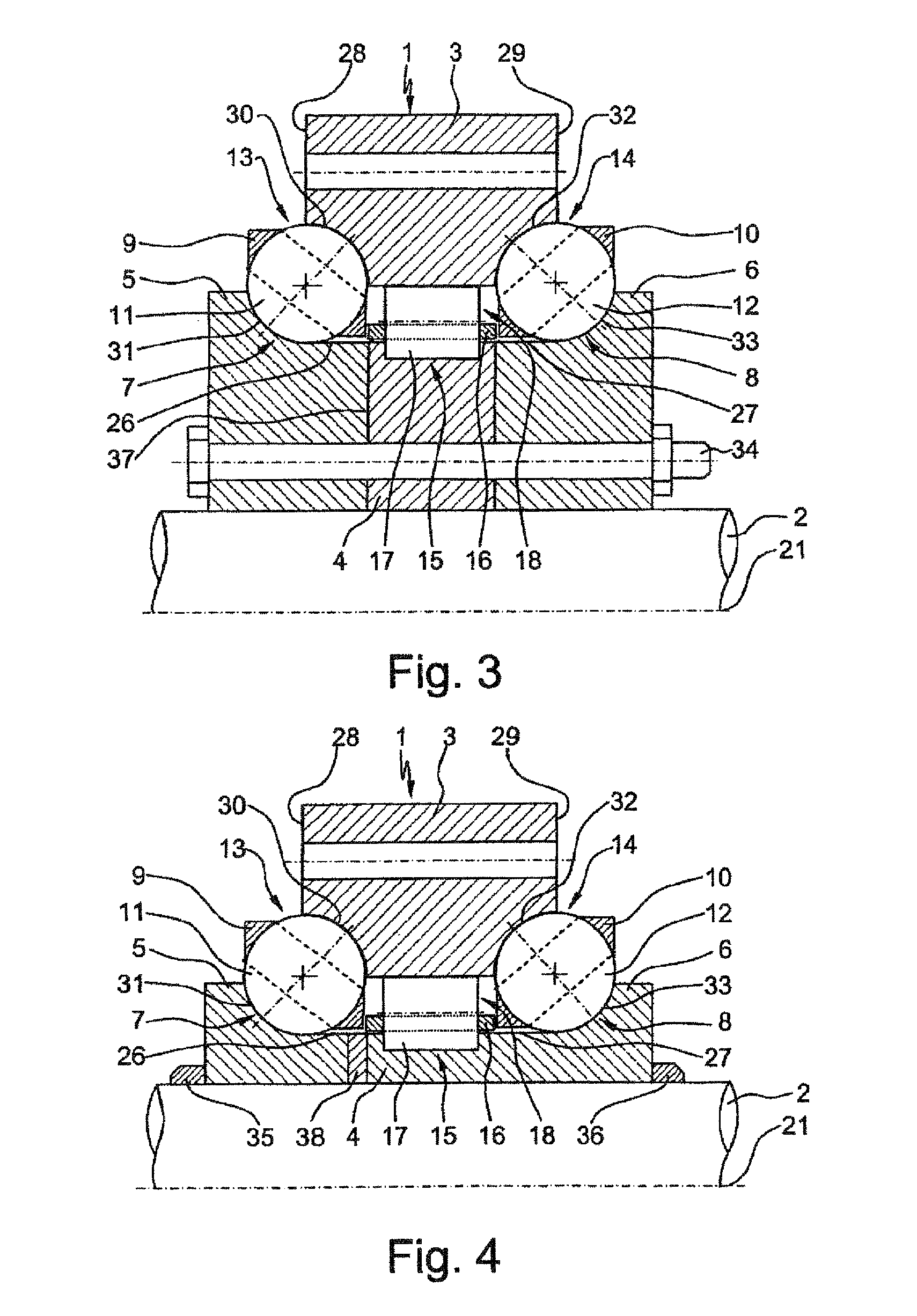Multiple-row large roller bearing, especially axial radial bearing for the main arrangement of bearings of the rotor shaft of a wind power installation
a technology of axial radial bearings and roller bearings, which is applied in the direction of bearing units, rigid supports, machines/engines, etc., can solve the problems of relatively high friction moment, unfavorable kinematics, and the design of rolling bodies as bearing needles or cylinder rollers, etc., to achieve favorable kinematics, facilitate assembly and disassembly, and high degree of axial tilting resistance
- Summary
- Abstract
- Description
- Claims
- Application Information
AI Technical Summary
Benefits of technology
Problems solved by technology
Method used
Image
Examples
first embodiment
[0022]FIG. 1 shows a partial view of a cross section through a multi-row large rolling bearing designed according to the invention;
[0023]FIG. 2 shows a partial view of a cross section through a variant of the first embodiment of a multi-row large rolling bearing designed according to the invention;
second embodiment
[0024]FIG. 3 shows a partial view of a cross section through a multi-row large rolling bearing designed according to the invention;
[0025]FIG. 4 shows a partial view of a cross section through a variant of the second embodiment of a multi-row large rolling bearing designed according to the invention;
third embodiment
[0026]FIG. 5 shows a partial view of a cross section through a multi-row large rolling bearing designed according to the invention; and
[0027]FIG. 6 shows a partial view of a cross section through a variant of the third embodiment of a multi-row large rolling bearing designed according to the invention.
PUM
| Property | Measurement | Unit |
|---|---|---|
| axial forces | aaaaa | aaaaa |
| radial forces | aaaaa | aaaaa |
| width | aaaaa | aaaaa |
Abstract
Description
Claims
Application Information
 Login to View More
Login to View More - R&D
- Intellectual Property
- Life Sciences
- Materials
- Tech Scout
- Unparalleled Data Quality
- Higher Quality Content
- 60% Fewer Hallucinations
Browse by: Latest US Patents, China's latest patents, Technical Efficacy Thesaurus, Application Domain, Technology Topic, Popular Technical Reports.
© 2025 PatSnap. All rights reserved.Legal|Privacy policy|Modern Slavery Act Transparency Statement|Sitemap|About US| Contact US: help@patsnap.com



